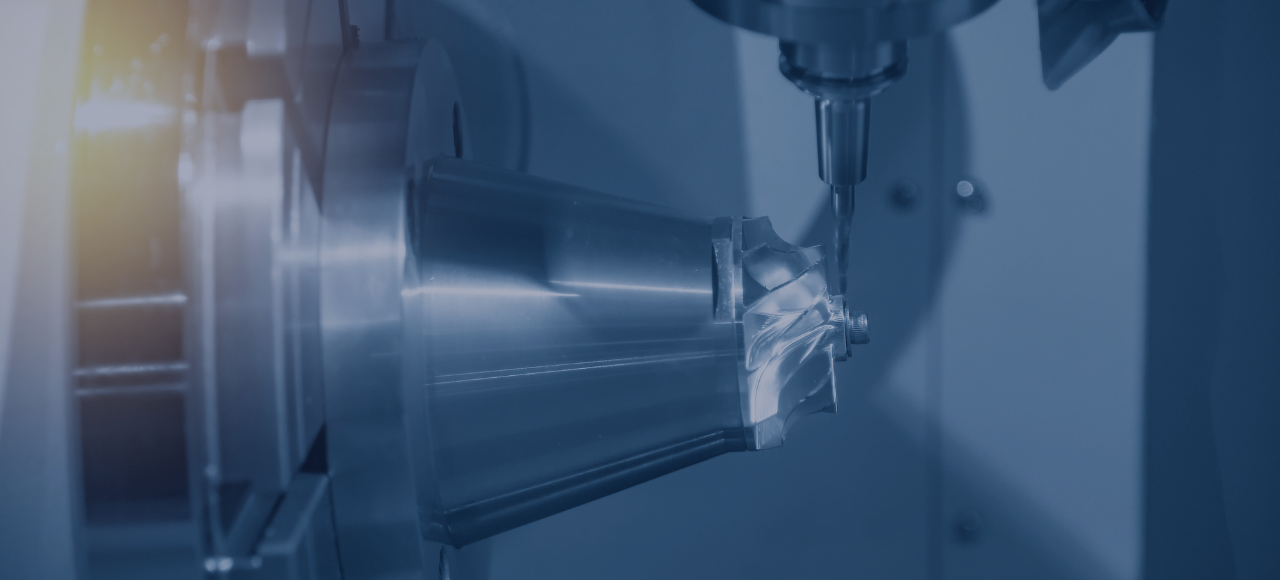CNC machining is crucial in the aerospace industry, where precision and quality are paramount. It involves using computer-controlled machines to precisely shape and cut aerospace components from materials like metals, plastics, or composites. In the aerospace industry, CNC machines can produce various components, such as engine parts, structural elements, landing gear components, brackets, etc. In this article, we will explore the significance of CNC machining in aerospace manufacturing, its applications, benefits, importance, advanced techniques, and optimizations.
Key benefits of using CNC machining in the Aerospace industry
- Enhanced precision and repeatability for consistent part quality.
- Increased productivity and efficiency in producing complex aerospace components.
- Ability to create intricate and precise geometries that are difficult to achieve manually.
- Reduces human error and improves the overall accuracy of parts.
- Higher production speed compared to traditional machining methods.
- Cost-effective for large-scale production of aerospace parts.
- Improved material utilization and waste reduction.
- Provides versatility to machine a wide range of materials used in aerospace.
- Enables automation and lights-out operation for increased manufacturing efficiency.
- Allows for prototyping and rapid iteration of aerospace designs.
Applications in Aerospace CNC Machining
CNC machining is a really important process used in making airplane parts. These parts include things like bushings, hinges, clamps, brackets, engine parts, landing gear parts, and custom components that meet special requirements.
Here’s a list of applications in aerospace CNC machining:
- Precision milling of aircraft components.
- Turning and machining engine parts for aircraft.
- CNC drilling of precision holes in aerospace structures.
- Manufacturing complex airframe components with high accuracy.
- CNC machining turbine blades and vanes for jet engines.
- Fabricating aerospace tooling and fixtures.
- Creating intricate and lightweight aerospace prototypes.
- CNC machining landing gear components.
- Manufacturing aerospace hydraulic and fuel system parts.
- Producing complex geometries in aerospace composite materials.
The Importance of Precision in Aerospace CNC Machining
- Precision is a critical component in aerospace manufacturing due to the industry’s stringent safety regulations and performance standards. Flaws or inconsistencies in aircraft components can have devastating effects on flight safety. CNC machining eliminates human error by utilizing computer-controlled machines that follow precise instructions to fabricate complex parts with tight dimensions and tolerances.
- Aerospace components require exceptional precision to ensure proper fitment, functionality, and structural integrity. Even minor deviations from specified dimensions can lead to compromised performance or failure during operation. CNC machines offer high repeatability and accuracy to meet these demanding requirements consistently.


Advanced Techniques in CNC Machining
- Engineers use design software like Computer-Aided Design (CAD) to create precise 3D component models before manufacturing CNC machined parts. This ensures the accurate construction of various parts with complex geometries, which is crucial for manufacturing aerospace parts. Workflow software helps CNC machine operator to streamline the manufacturing process. It optimizes toolpaths, reducing material waste and improving overall efficiency. Inspection systems with high-resolution cameras and sensors help to ensure strict adherence to industry standards.
- CNC machining also plays a significant role in aerospace research and development. It allows for prototyping, testing, and refinement of new designs and concepts before they are put into full-scale production. This iterative approach reduces development time and costs while improving the overall quality of aerospace components.
Optimization Strategies in Aerospace CNC Machining
- When creating aerospace parts using CNC machines, it’s important to optimize the process to save time and money. This can be done by using simulation software to identify and fix problems before production starts. It’s also important to choose the best CNC machine and cutting tools based on the materials and complexity of the part.
- To speed up production, it’s helpful to break it into smaller batches or use multiple machines at once. This can help maintain quality while getting the job done faster. One of the best ways to optimize production is to find the right CNC machining services. It uses advanced techniques and best practices for optimal results.
Key Takeaways
CNC machining is an essential process in the aerospace industry, offering precise fabrication of complex components with tight tolerances. Its applications range from producing critical parts to research and development activities. Optimization strategies such as simulation software and effective machine selection contribute to increased efficiency and productivity. Understanding these key aspects of CNC machining empowers businesses to make informed decisions when procuring CNC machining services for their aerospace requirements.
If you’re looking for high-quality CNC machining services for the aerospace industry, explore Zetwerk’s range of capabilities. With a wide selection of CNC machines and expert operators, Zetwerk delivers precision-machined components to meet your aerospace manufacturing needs. Visit the Zetwerk Knowledge Hub for more information.




FAQs
CNC machining plays a crucial role in aerospace manufacturing by precisely and accurately machining complex parts with tight tolerances. It enables the production of critical components such as bushings, hinges, clamps, and custom parts required in aircraft assembly.
The aerospace industry utilizes various materials for CNC machining, including titanium, Kovar, aluminum, stainless steel, copper, bronze, and certain plastics. These materials offer excellent strength-to-weight ratios, corrosion resistance, temperature resistance, and other desired properties.
Weight reduction is essential in the aerospace industry as it improves fuel efficiency and increases payload capacity. CNC machining allows for the creation of partially hollowed-out structures that reduce weight without compromising quality or performance.
Surface finishes play a significant role in enhancing the corrosion resistance and functionality of aerospace CNC machined parts. They provide smooth surfaces that minimize friction and wear while ensuring proper sealing between mating surfaces.
Efficient production in aerospace CNC machining requires careful consideration of various factors. Machine selection based on specific requirements, use of appropriate cutting tools for different materials, and breaking up production into manageable steps for optimization are some key considerations to achieve efficiency in the process.







